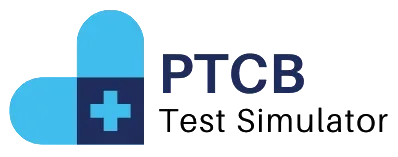Physics Practice Test
The role of a Certified Nursing Assistant (CNA) is crucial in the healthcare system, as these professionals provide essential support to patients and healthcare staff. While the primary focus of a CNA’s training is on patient care, an understanding of basic physics can enhance their effectiveness in a medical setting. This essay explores the significance of a physics practice questions-based quiz for CNAs, how it can be structured, and the benefits it provides.
Importance of Physics in Nursing Assistance
Physics is the foundation of many medical technologies and processes. For instance, CNAs often encounter equipment such as hospital beds, wheelchairs, and monitoring devices, all of which rely on principles of physics. Concepts such as force, motion, pressure, and energy are integral to understanding how these devices function and how to use them safely and effectively. Additionally, knowledge of physics can improve patient handling techniques, ensuring both caregiver and patient safety.
For example, understanding the concept of gravity is essential when transferring patients. CNAs must be aware of the forces at play to prevent falls and injuries. Similarly, knowledge of pressure is vital when managing devices like blood pressure cuffs, as this understanding informs the correct application of these tools.
Structuring the Quiz
A physics-based quiz for CNAs can be structured around key topics that are directly applicable to their daily responsibilities. The quiz can consist of multiple-choice questions, true/false statements, and short answer questions that cover fundamental physics principles. Some essential areas to focus on include:
- Basic Mechanics: Questions could involve concepts of force, mass, and acceleration. For instance:
- What is the formula for calculating force?
- If a patient weighs 150 pounds, how would gravity affect the lifting process?
- Fluid Dynamics: Understanding how fluids behave is important in nursing, especially in relation to IV fluids. Sample questions might include:
- How does pressure change with depth in a fluid?
- What is the principle behind how a syringe works?
- Thermodynamics: Temperature regulation is crucial in patient care. Questions could focus on:
- How does heat transfer affect patient comfort?
- What are the different methods of measuring temperature?
- Waves and Sound: Many monitoring devices use sound waves (e.g., ultrasound). Relevant questions might be:
- What is the principle behind ultrasound imaging?
- How do sound waves travel through different media?
- Energy Transfer: Questions could involve understanding energy conservation in healthcare settings. For instance:
- How does the concept of energy conservation apply to patient mobility?
- What types of energy are most relevant in a healthcare environment?
Benefits of the Quiz
Implementing a physics practice questions-based quiz for CNAs offers several advantages:
- Enhanced Understanding: A quiz helps reinforce the essential physics concepts that CNAs encounter in their daily work. This understanding fosters confidence in their abilities to handle medical equipment and care for patients.
- Improved Patient Safety: Knowledge of physics enables CNAs to apply safe patient handling techniques, reducing the risk of accidents and injuries both for themselves and their patients.
- Better Equipment Usage: Familiarity with the principles of physics allows CNAs to use medical devices more effectively, ensuring that they function correctly and safely.
- Preparation for Certification: Many certification exams for CNAs may include questions related to basic physics. A quiz can serve as a valuable study tool, helping candidates prepare more effectively for these assessments.
- Critical Thinking Skills: Engaging with physics questions encourages CNAs to think critically and analytically about their environment. This skill is vital for effective problem-solving in a healthcare setting.
Conclusion
In conclusion, a physics practice questions-based quiz tailored for Certified Nursing Assistants is not only beneficial but necessary. By reinforcing essential physics concepts relevant to patient care and medical equipment, the quiz enhances the knowledge base of CNAs, leading to improved patient safety and care. As healthcare continues to evolve, incorporating fundamental scientific principles into CNA training will ensure that these vital healthcare providers are well-prepared to meet the challenges of their roles. Ultimately, the integration of physics into the CNA curriculum underscores the importance of a multidisciplinary approach in nursing education, which can significantly enhance patient outcomes and the efficiency of healthcare services.

